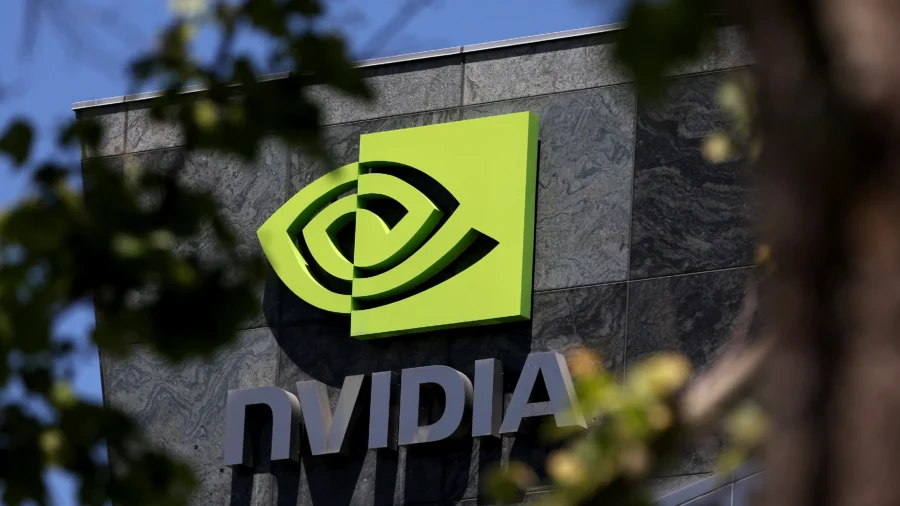Chipmaker Nvidia’s latest quarterly earnings report failed to impress investors, even as the tech titan topped Wall Street estimates and extended its streak of blockbuster growth.
After Wall Street’s closing bell on Aug. 28, the chip juggernaut reported that revenues rose $30 billion, rocketing 122 percent annually during the quarter after three consecutive periods of year-over-year growth that surpassed 200 percent. This was also up 15 percent from the previous quarter.
Revenues in its data center division spiked 154 percent year-over-year to $26.3 billion, accounting for 88 percent of total sales.
Nvidia, which has been at the center of the artificial intelligence craze over the past year, noted that nearly $4 billion in revenues originated from the firm’s networking products. Gaming revenue also increased 16 percent from a year ago to $2.9 billion. It provides chips for Nintendo’s video game consoles.
Net income soared to $16.6 billion, or 67 cents per share, up from $6.18 billion, or 25 cents a share, at the same time a year ago.
Gross margins dipped from 78.4 percent to 75.1 percent, and Nvidia projects that gross margins will be in the “mid-70 percent range” for the full year, falling short of the consensus estimate of 76.4 percent.
The company announced that its board of directors approved a $50 billion stock buyback. Last year, Nvidia confirmed a $25 billion share buyback program.
“Nvidia achieved record revenues as global data centers are in full throttle to modernize the entire computing stack with accelerated computing and generative AI,” founder and CEO Jensen Huang said.
All attention is now on the company’s next-generation AI chip, named Blackwell. In an earnings call, it confirmed that sample Blackwell chips were shipped the last quarter, with adjustments made to ensure the product will be more efficient to produce.
“The change to the mask is complete. There were no functional changes necessary,” Huang told shareholders and analysts. “When I [say] start production in Q4, I mean shipping out. I don’t mean starting to ship.”
Meanwhile, Nvidia said it anticipates that its current-generation chip, called Hopper, will bolster total shipments in the next two quarters.
According to John Belton, portfolio manager at Gabelli Funds, investors were already “a bit nervous” heading into Nvidia’s earnings report, mainly because of potential delays in the production and shipment of Blackwell chips.
“Most of our channel checks suggest that the delays should be relatively short-lived, likely due to a design flaw rather than a manufacturing issue,” Belton said in a note. “This flaw has since been corrected, so while it may affect near-term revenue, results, and forward guidance, it should have no impact on Nvidia’s longer-term business trajectory.”
Market Reaction
With the company’s market capitalization rate of more than $3 trillion, Nvidia’s earnings calls have become must-watch events—in person and online—on Wall Street.
That said, its earnings were not well received in extended trading, as shares slumped as much as 8 percent to around $116 per share. The stock has finished the Aug. 28 trading session down 2.1 percent to $125.61.
Still, year-to-date, the Nvidia stock is up about 160 percent.
After the closing bell, the drop in Nvidia shares weighed on the tech-heavy Nasdaq Composite Index, which tumbled more than 1 percent. The blue-chip Dow Jones Industrial Average and the S&P 500 were little changed.
Nvidia is one of the so-called Magnificent Seven stocks, which include Apple, Microsoft, Google parent Alphabet, Amazon.com, Meta Platforms, and Tesla Motors. Together, they represent more than a quarter of the U.S. stock market. Ten stocks account for one-third of the S&P 500.
“We think Nvidia is probably more important to the market than anything else going on over the next week or so,” Ken Mahoney, CEO at Mahoney Asset Management, said in a note.
From The Epoch Times

